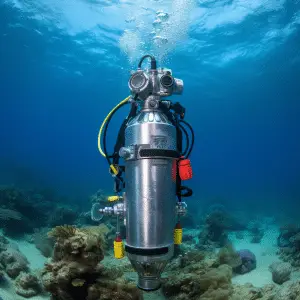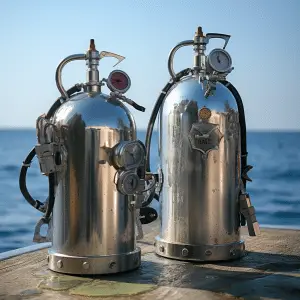Even if you are someone that has never tried scuba, I am sure that you are more than aware of just how pricey it can be to do. That is because scuba diving depends on a long list of equipment that makes doing it possible. This starts at something as simple as cold water gloves for scuba diving and extends all the way to expensive diving watches that are needed to ensure the safety of divers.
When someone picks up scuba diving as a hobby, the first thing that they need to do is buy a long list of equipment. scuba tank lifespan, this equipment isn’t cheap and is usually completely brand new. Because of this fact, divers expect their equipment to be used for quite some time. After all, they have invested a whole lot of money in them.
One of the most expensive pieces of equipment that a scuba diver can buy is a scuba tank. This is not only one of the most expensive pieces of equipment that they can buy, but it is also one of the most important pieces of equipment. This is because when you are underwater you are completely dependent on scuba tanks to supply you with oxygen and essentially keep you alive. However, a common misconception that people have when it comes to oxygen tanks is that they are made for one use only and need to be replaced for every new water excursion. Of course, this isn’t true, as scuba tanks can actually be used quite a number of times. But exactly how many years does a scuba tank last?
Aluminum VS steel

Before we get into the average lifespan of a tank, it is important to remember that not every tank is made with the same material. The two main metals that scuba tanks are made from are aluminum and steel.
Aluminum
scuba tank lifespan, When compared to steel, aluminum is the more malleable and flexible metal. While aluminum tanks are more popular for recreational diving due to their light weight, their smaller oxygen capacities mean that they are rarely utilized for deep dives. However, despite aluminum’s diminished durability, it should serve you well for a number of years. The typical lifespan of an aluminum tank is between 10 and 15 years.
Reasons an aluminum tank may have a shorter lifespan
While aluminum tanks are less likely to be damaged than their steel counterparts, any damage is still possible. Corrosion can weaken aluminum, as it does any metal, but it can be especially detrimental to aluminum because of its relative weakness. This can be avoided with regular upkeep, for as by emptying the tank completely before storing it.
This can happen if you try to fill the tank with too much oxygen or if you mistreat your tank. Unfortunately, these fractures are not always noticeable, so be sure to test your tank.
Steel
Steel is much stronger than aluminum and because of this fact, you can expect to get a larger life span out of a steel tank. A steel tank can expect to last for around 50 years. This may seem like a really long time and that’s because it is. However, your tank will not make it to that age if it is not properly cared for. Steel can often fall victim to corrosion which can drastically minimize its life span of your tank. This means that maintenance is an essential part of owning a steel tank.
Why a steel tank may break prematurely
The biggest issue that you will face as an owner of a steel tank is just how easily they rust. This not only happens on the outside of the tank, but it can also occur on the inside of the tank which can go unnoticed for a long time. However, steel tasks are less susceptible to fracturing which makes them a lot stronger than aluminum tanks.
Testing
A good way to make sure that a scuba tank has a long lifespan is through constant testing. Testing is one of the best things you can do to minimize the risks of snorkeling and should be done regularly as issues with your tank can spring up out of nowhere. There are two kinds of testing that you can carry out to check the condition of your tank. The first test you can do is a visual inspection and the second is a hydrostatic test.
Visual testing

Visual testing is the first kind of testing that your tank will undergo. This is expected to happen regularly and is completed by a trained technician. One of the biggest issues when it comes to tanks is being unable to investigate the inside. The trained technician will inspect both the inside and outside of the tank to check for any marks or damage. They also pick up fractures and cracks that can be easily missed and they do this with the use of specific cameras that can see a lot more than the naked eye.
If your tank passes its inspection it is given a certification to state so, something that is looked at by divers before you even enter the water with your tank. If your tank doesn’t pass, then it is usually disposed of.
Conclusion
This specific examination checks the tank’s material for damage. A technician will overfill the tank to test its gas-pressure resistance.
When overfilled, the tank will deform but not explode. If a tank does not return to its previous shape, it may be worn out and unusable. The metals may rip during hydrostatic testing, which means the tank failed and is unsafe. If the tank hasn’t been maintained or inspected regularly, this happens.
When properly maintained, tanks last a long time, so don’t be afraid to pay on a high-quality tank.
After learning a scuba tank’s lifespan, check go our “5 Best Scuba Tanks for 2022” post to choose one.
